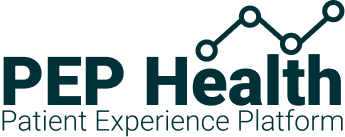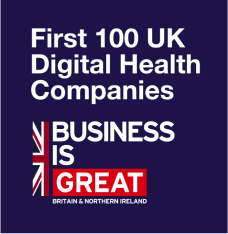In part one of this series, we showed how PEP Health is different from reputation management tools, built exclusively for healthcare and validated against industry benchmarks. This second piece focuses on another cornerstone of experience measurement: surveys.
For decades, patient surveys have been the gold standard for measuring experience in healthcare. They shape quality programs, influence reimbursement, and are deeply embedded in how systems measure success. Surveys remain important in 2025, but they don’t tell the full story.
Surveys capture structured feedback at specific points in time. They provide a snapshot, but healthcare is lived in real time. Waiting months to understand those perceptions creates blind spots.
That’s where PEP Health comes in. We fill in the gaps between survey cycles, providing continuous intelligence that shows leaders what’s happening today, and not months (or years) ago.
Where Surveys Stop, Experience Intelligence Starts
Surveys are periodic, not continuous
In healthcare, perceptions form and evolve through every touchpoint, from the first phone call or attempt to book an appointment through check in, treatment, recovery, discharge, and follow up. Every interaction adds another layer to the story and is an opportunity to learn, improve, and build trust.
Yet most surveys deliver data in quarterly or annual cycles and are backward-looking. By the time results arrive, opportunities to address problems and influence choices have already passed and patients that were dissatisfied have left.
PEP Health provides a continuous, live feed of experience, surfacing signals in real time so leaders can respond before loyalty, outcomes, and revenue take a hit.
Surveys are limited by who responds
Response rates often fall below 30%, leaving younger patients, underserved communities, those with limited health literacy, and broader consumer voices underrepresented. The very groups most affected by disparities are often the least heard.
Family and caregiver voices are also often overlooked — those who speak or make decisions on behalf of loved ones, and who may not have been on the receiving end of care but still have their very own, real, and valid experiences throughout the process to share, such as whether they were included in decision-making, supported through stress or grief, or given a comfortable place to wait while the patient received care.
This lack of representation creates equity gaps and misses critical insight into the real experiences and barriers that drive engagement and choice.
PEP Health captures unsolicited feedback from all these groups across the care journey, building a more inclusive and representative picture of experience in healthcare.
Surveys are siloed
A single service line may rely on different surveys for each setting — one for inpatient care, another for outpatient and clinics — making it nearly impossible to see how experience connects across the same pathway.
PEP Health brings these fragmented voices together, connecting every part of the journey into a coherent and unified picture.
Surveys are structured, not nuanced
Standardized questions support benchmarking but can’t capture the full texture of experience. With surveys, you don’t know what you don’t ask, and you can’t fix what you don’t know is broken.
A fixed set of questions can’t capture what truly matters to patients. If all your surveys ask about doctor communication but 95% of your unsolicited reviews are about parking, you’re missing the real issue.
PEP Health removes these constraints by letting patients tell their stories in their own words and listening where they’re already speaking. That way, the most urgent and meaningful issues arise naturally.
PEP Health’s healthcare-trained AI interprets this language with nuance. Consider these examples: “I had chest pain after surgery” vs “It was a pain getting my bill sorted.” A generic AI tool might lump both uses of pain in the same category, but one is a clinical issue while the other is an administrative headache.
Healthcare-trained AI learns to spot the difference, turning raw feedback into reliable, usable intelligence. Comments are classified across seven validated domains with 1–5 scoring that align to industry benchmarks. The result is insight that is clear, patient-led, inclusive, and captures the full breadth and depth of real experiences.

PEP Health interprets nuanced patient language with 1–5 scoring across seven experience domains.
Built to Work With Surveys, Not Against Them
Surveys remain essential for compliance and national benchmarking through HCAHPS and CAHPS. PEP Health strengthens them by adding immediacy and depth. Together, leaders can:
- Predict survey performance months in advance by watching PEP Scores trend up or down.
- Target interventions with market-area, service-line and domain-level precision.
- Validate changes quickly without waiting for the next survey cycle.
Why This Matters Now
Patient experience is no longer a soft metric. It shapes loyalty, drives Star Ratings, and directly impacts reimbursement. Waiting months for survey feedback is too slow.
PEP Health fills that gap, giving leaders a validated, predictive, real-time view of what matters most to patients, and the ability to act before it costs revenue or trust.
The Bottom Line
Surveys remain the cornerstone of measurement. PEP Health delivers the missing dimension: continuous experience intelligence. Together, they provide both the structure and the immediacy needed to improve experience in ways that are timely, meaningful, and financially measurable.
Already running surveys? That’s your foundation. Adding PEP Health gives you the clarity to act faster and smarter.
This is what healthcare experience looks like when it’s measured right.
Reach out to schedule a demo or learn more about the PEP Score ⟶






